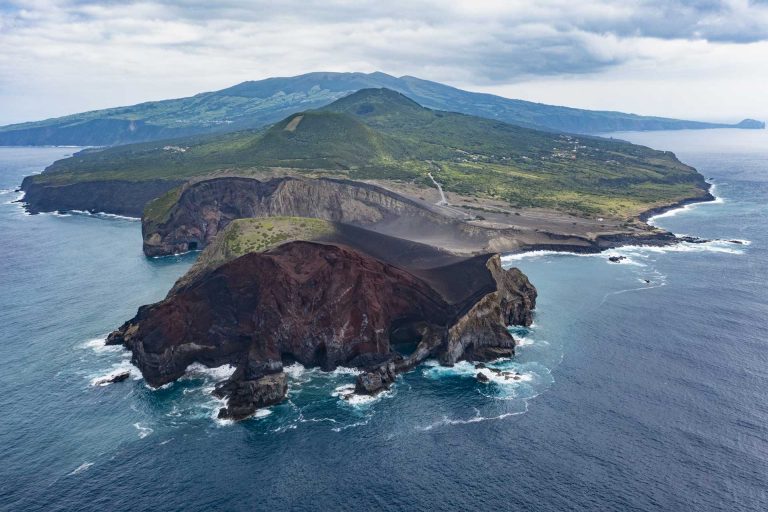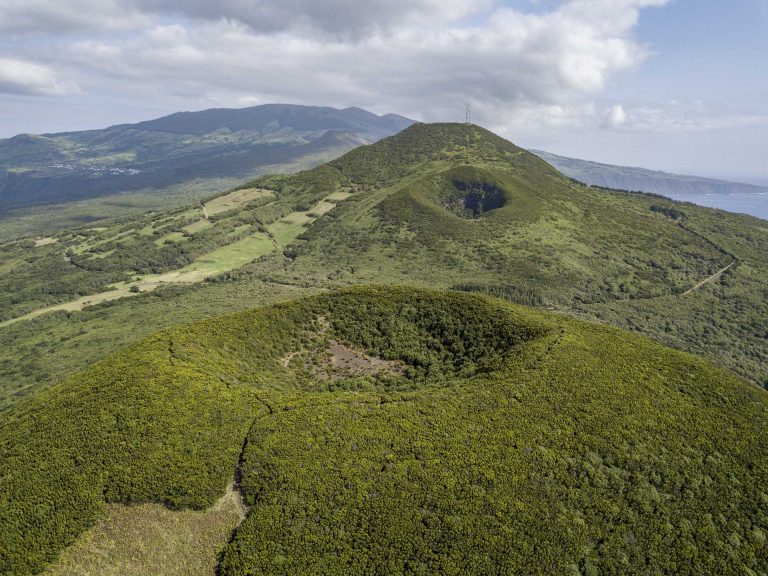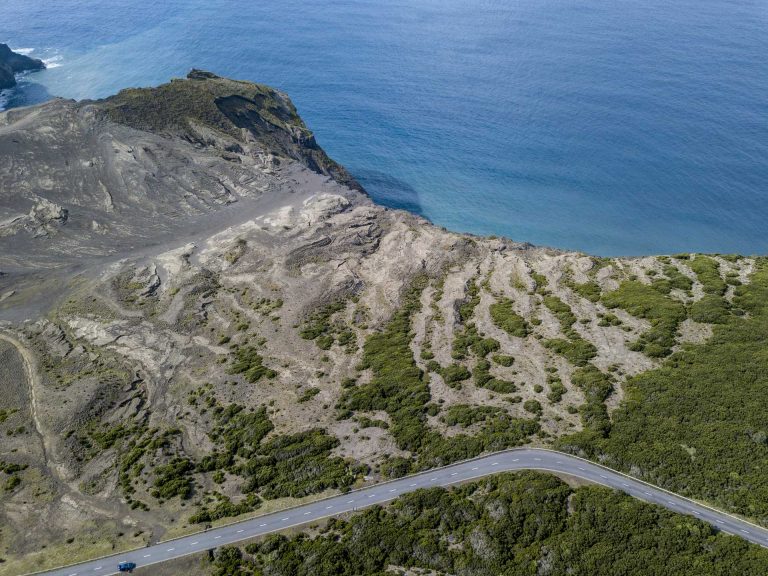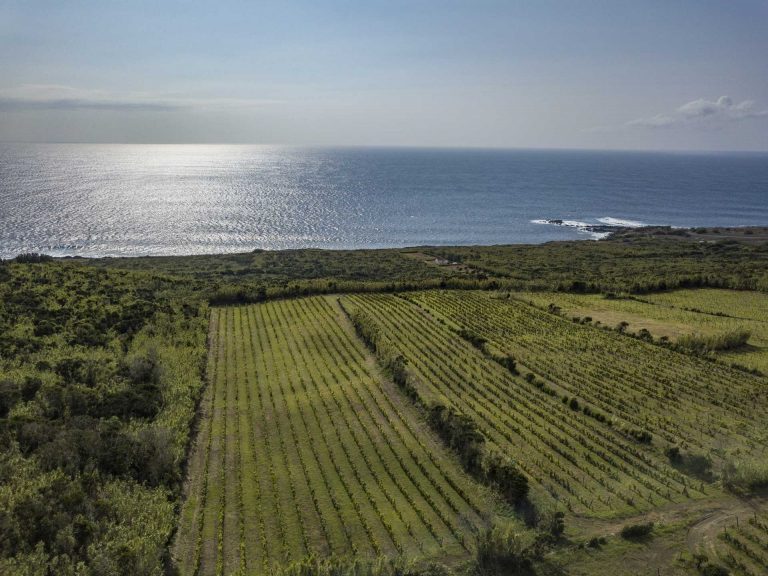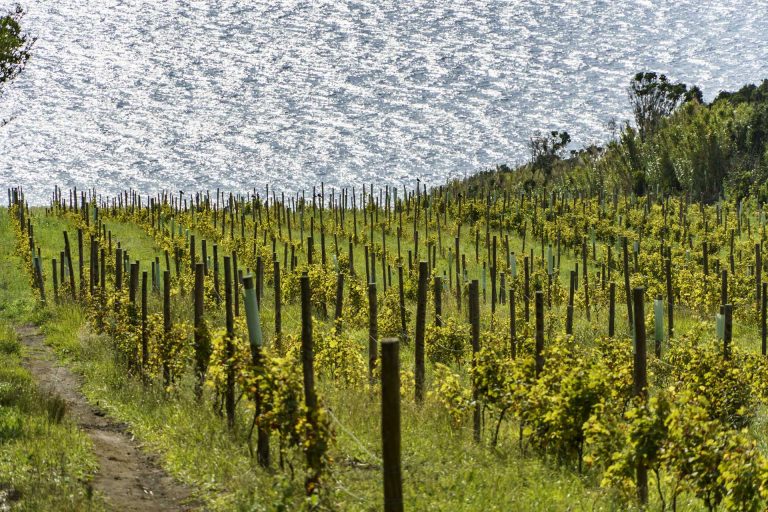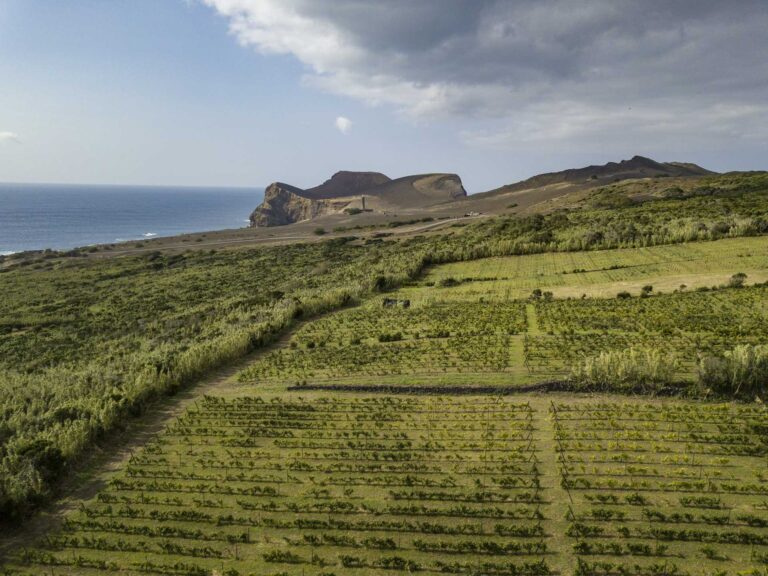Faial
Praia do Norte, Capelinhos and Capelo
Duration
Half-day (4h00)
Total distance
11 km
Difficulty
Medium
ITINERARY
RVI01FAIUnderstanding the history of Faial wine requires getting lost among old vineyards, many of which are currently abandoned or being transformed by the hand of new producers, passionately dedicated to this craft of recovering what was once, one of the main economic activities of the island.
In this itinerary, we start by visiting the North Coast of the island, along a circular walking trail with about 2.5 km, in the parish of Praia do Norte. This parish, severely marked by its proximity to the Capelinhos Volcano, illustrates the eternal battle between the sea and volcanoes, resulting itself from a lava flow in the historic eruption of Cabeço do Fogo (1672-1673). Blessed by a unique microclimate, this parish became favorable for the cultivation of vineyards and, due to this reason, wineries and summer houses dedicated to the art of producing Faial wine started emerging here.
This walking trail passes precisely through the picturesque Rua das Adegas, towards Praia do Norte. Take a moment to enjoy this protected landscape, full of endemic species – typical of the Laurissilva forest, such as Louro (Laurus azorica), Holly (Ilex azorica) and Heather (Erica azorica) – in perfect harmony with the stone walls and the small plots of land, previously covered in vines.
The trail continues to the center of the parish of Praia do Norte, passing by the Chapel of Nossa Senhora da Penha de França, built in 1878.
We head towards the Capelinhos area, one of the most interesting landscapes in Faial. Deeply marked by the volcanic eruption of 1957, which caused the destruction of a large part of the existing houses and plantations at the time, this unique and impressive landscape is sometimes compared to the lunar surface.
We suggest ending the day the best way possible: a visit to the Adega do Vulcão, where we can learn more about this unique project that aims to recover the abandoned winemaking tradition of the island. As we walk along the trails between the vineyards, with our eyes set on the sea, we are surprised by the sight of ruins of small wineries that have been buried by the ashes of the Capelinhos Volcano. These ruins testify the importance that this area had regarding wine production, before this famous natural disaster took place. Set between the green of the vineyards and the gray tones of the soil, we are able to hear the sea very close by as we finish off the day tasting wines from these unique soils, full of history.



